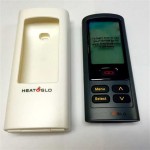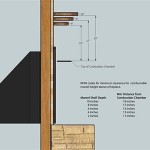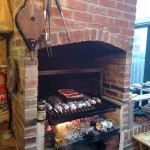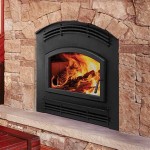Antique Fireplace Dog Irons: History, Function, and Collectibility
Fireplace dog irons, also known as andirons, fire dogs, or fire stands, represent a significant aspect of historical domestic life. These functional and often decorative objects served a critical purpose in open hearth fireplaces, elevating firewood to improve combustion and airflow. Their presence in homes across various periods and styles underscores their enduring utility and aesthetic appeal, making them highly sought-after antiques.
The history of dog irons traces back to medieval Europe, where open hearth cooking and heating were fundamental to daily existence. Early examples were rudimentary in design, primarily focused on functionality with minimal ornamentation. As fireplaces evolved from simple, open hearths to more refined architectural features, so too did the design and craftsmanship of dog irons. The Renaissance period witnessed an increased emphasis on artistry, with dog irons becoming more elaborate, incorporating intricate carvings, figural representations, and precious metals. This trend continued through subsequent eras, with styles reflecting prevailing artistic movements such as Baroque, Rococo, and Neoclassical.
The materials used in the construction of antique fireplace dog irons varied depending on the era, region, and social status of the owner. Wrought iron was a common choice, particularly for earlier and more utilitarian examples. Cast iron became increasingly popular during the 18th and 19th centuries, offering greater flexibility in design and mass production. Brass, bronze, and even silver were used for more decorative and high-end pieces, often incorporating ornamentation such as animal figures, mythological creatures, and heraldic symbols. The study of the materials and construction techniques used in antique dog irons provides valuable insights into the history of metalworking and the evolution of domestic technology.
The geographical distribution of antique dog irons reflects the historical patterns of fireplace use and the availability of materials. Regions with colder climates and abundant forests, such as Northern Europe and North America, saw widespread use of fireplaces and, consequently, a greater demand for dog irons. Regional variations in design and materials also emerged, reflecting local traditions and artistic preferences. For instance, American Colonial dog irons often exhibit a simpler, more practical design than their European counterparts, reflecting the utilitarian values of the era. Identifying the geographical origin of an antique dog iron can provide valuable clues about its age, authenticity, and historical significance.
Functionality and Design Evolution
The primary function of fireplace dog irons was to elevate firewood above the hearth floor, allowing air to circulate freely beneath the woodpile. This improved combustion, resulting in a hotter, cleaner burn and reducing smoke buildup. The basic design consists of two upright supports, or "dogs," connected by a horizontal bar or grate. The uprights provide stability and support for the wood, while the bar or grate prevents the wood from rolling off the hearth. The height and width of the dog irons were typically adjusted to accommodate different sizes of firewood and fireplaces. This design provided consistent burning and heat control.
Over time, the design of dog irons evolved to incorporate additional features and functionalities. Some examples include adjustable grates that could be raised or lowered to control the intensity of the fire, side hooks for holding tools such as pokers and tongs, and built-in screens to prevent sparks from escaping the fireplace. These innovations reflect a growing awareness of fire safety and the desire to improve the efficiency and convenience of fireplace use. The addition of these feature showcases the innovative designs.
The aesthetic design of dog irons also underwent significant changes over time. Early examples were often plain and functional, with little or no ornamentation. As fireplaces became more prominent architectural features, dog irons began to incorporate decorative elements, such as sculpted figures, intricate carvings, and polished surfaces. The style of these decorations often reflected the prevailing artistic trends of the era, from the classical motifs of the Neoclassical period to the organic forms of the Art Nouveau movement. Some dogirons even had brass legs.
Identifying and Authenticating Antique Dog Irons
Identifying and authenticating antique fireplace dog irons requires a keen eye for detail and a thorough understanding of historical styles, materials, and manufacturing techniques. Several key factors can help determine the age, authenticity, and value of a piece. The presence of original markings or stamps can provide valuable information about the manufacturer, date of production, and potential provenance. These marks can be found on the uprights, the base, or the connecting bar. Researching these markings in historical records can often reveal the piece's origin and its history.
The construction techniques used in antique dog irons can also offer clues to their age and authenticity. Hand-forged ironwork, for example, is a hallmark of earlier pieces, while cast iron became more prevalent during the 18th and 19th centuries. Examining the joints, welds, and surface finish can reveal whether the piece was made using traditional methods or more modern techniques. The existence of oxidation and wear patterns also provide tell-tale indicators of material age.
Comparing the design and style of the dog irons to known examples from different periods and regions can help to establish their authenticity and provenance. Consulting with experts in antique metalwork and researching historical catalogs and pattern books can provide valuable insights into the design trends and manufacturing practices of different eras. Any deviation from expected styles may suggest later alterations or reproductions.
Examining the patina, the surface finish, and general condition of the dog irons can provide important clues about their age and history. A genuine antique patina typically exhibits a subtle, uneven texture and color, reflecting the gradual effects of oxidation and wear. Signs of excessive cleaning, polishing, or restoration may indicate that the piece has been altered or misrepresented. Preserving the original patina is often essential in maintaining the value and authenticity of an antique dog iron.
The Collectibility and Value of Antique Fireplace Dog Irons
Antique fireplace dog irons are highly sought-after by collectors and decorators alike, prized for their historical significance, aesthetic appeal, and functional utility. The value of a particular piece depends on a variety of factors, including its age, rarity, condition, provenance, and overall design. Examples with exceptional craftsmanship, unique designs, or documented provenance command the highest prices in the market.
Rarity and historical significance are primary drivers of value in the antique dog iron market. Pieces associated with notable historical figures or events, or those made by renowned metalworkers, are particularly desirable. Examples that represent unique or experimental designs are also highly prized by collectors. The scarcity of certain materials, like silver or bronze, further elevates a piece's collectibility.
Condition also plays a crucial role in determining the value of antique dog irons. Pieces in original condition, with minimal signs of wear or restoration, are generally more valuable than those that have been heavily repaired or altered. However, a well-preserved patina is considered desirable, as it reflects the piece's age and history. While damage affects pricing, many collectors are willing to pay for an antique piece that is repaired well. The key is transparency in the restoration process.
The style and design of antique dog irons also influence their collectibility. Pieces that reflect popular artistic movements, such as Art Nouveau or Art Deco, are often highly sought-after. Examples with elaborate figural representations or intricate carvings can also command premium prices. The size and proportions of the dog irons are also important considerations, as they should be appropriate for typical fireplace sizes.
The market for antique fireplace dog irons is dynamic, with prices fluctuating based on trends in interior design, art collecting, and historical interest. Staying informed about current market values and attending antique shows and auctions can help collectors make informed purchasing decisions. Consulting with experienced antique dealers and appraisers can also provide valuable insights into the value and authenticity of specific pieces. The appreciation of antique fireplace dog irons continues, cementing their place as artifacts with enduring charm and historical importance.

A Focus On Firedogs Antique Fireplaces And Surrounds Thornhill Galleries

Antique Rustic Fire Dog Fireplace Andirons Industrial Blacksmith Saint Bernard Iron Spaniel Folk Art Sculpture Vintage Farmhouse Salvage Singapore

What Is The Purpose Of Andirons And Fireplace Grates

Antique Rustic Fire Dog Fireplace Andirons Industrial Blacksmith Saint Bernard Iron Spaniel Folk Art Sculpture Vintage Farmhouse Salvage

Antique Aws Brass Federal Fireplace Andirons Claw Feet Iron Fire Dog 17 H

Andirons Dogs Fireplace In Broe And Forged Iron Antique For At 1stdibs

1800 S Vintage Fireplace Dog Irons

Pair Of Antique French Fireplace Dog Irons Andirons Chez Pluie

Art Deco Set Of Antique Figural Dog Andirons Matching Fireplace Tools Tenn Chrome Plate Co Nand6 For Antiques Com Classifieds

Antique Fireplace Andirons Dog Greyhound Firedogs French Broe Decor Tools Surround Gift








